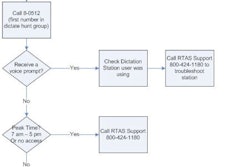COLORADO SPRINGS, CO - Breast imagers are reasonably well positioned to ride out the changes healthcare reform will bring in the U.S. However, all radiologists need to be aware of issues relating to proposed healthcare funding legislation and federal healthcare reform, according to a presentation at this week's Society of Breast Imaging (SBI) postgraduate course.
In a fast-paced analysis of what's taking place in Washington, DC, under the Obama administration, Dr. James Borgstede encouraged attendees to stay informed and be proactive about change as he reviewed how new socioeconomic legislation and rules will affect radiology practices. Borgstede is vice chairman of the department of diagnostic radiology of the University of Colorado Health Sciences Center in Aurora, and he previously served as president of the American College of Radiology (ACR) of Reston, VA.
President Barack Obama campaigned for healthcare reform, emphasizing the need for universal and affordable healthcare, overhauling healthcare bureaucracies to improve treatment, lowering costs, and reducing errors by implementing healthcare IT. With the recent passage of the American Recovery and Reinvestment Act (ARRA), the Obama administration doubled the investment of $10 billion in healthcare IT originally proposed on the campaign trail to a $19 billion commitment.
In spite of Tom Daschle's withdrawal from the position to lead the Department of Health and Human Services, the healthcare reform ideas he espoused remain intact with the appointment of Jeanne Lambrew, Ph.D., a healthcare expert with extensive federal agency and Clinton administration experience, as deputy director of the White House Office of Health Reform. Nancy Ann DeParle, its director, understands imaging issues, according to Borgstede.
The technology paradox
Paradigm shifts are occurring at a rapid pace with scrutiny of utilization and outcomes, plans to implement quality metrics and pay for performance, and emphasis on the support of primary care physicians and services. The Obama administration supports changes in reimbursement concepts, and it has a strong interest in technology -- yet new technology is being blamed for the escalating cost of healthcare.
In this respect, diagnostic imaging has become the No. 1 target. Medicare expenditures for diagnostic imaging exams rose from $7 billion in 2000 to nearly $14 billion in 2006. However, radiologists should not forget that as a result of the Deficit Reduction Act (DRA) of 2005, Medicare spending on imaging studies decreased in 2007 by 14%, Borgstede reminded attendees. Of the $1.8 billion drop in federal spending, CT and MRI exams accounted for $1.1 billion in savings.
Among healthcare disciplines, radiology is the acknowledged leader in healthcare IT adoption. The Obama administration is focusing on accelerating electronic medical record (EMR) implementation, with an emphasis on providing access to EMR technology for rural healthcare providers. Imaging integration into EMRs is presumed.
Borgstede reiterated concerns that as imaging data become more available throughout the healthcare enterprise, there is the possibility that clinicians could bypass radiologists' consultations, and hospitals might adopt greater use of remote radiology services as a way to lower costs.
"Radiology must beware of unfunded IT mandates that cost us time and money," Borgstede warned. He pointed out that adopting speech recognition systems without transcription editing can slow radiologists' productivity and provide a way for hospitals to offload the cost of transcription services. Increased demands for embedding images and radiology reports in an EMR may be an unplanned and unbudgeted cost to breast imaging practices.
The paradigm shift in support of primary care should not hurt breast imaging, he said. Primary care physicians aren't interested in getting involved in this field, so the revenue stream it represents will remain the domain of radiologists.
Breast imagers are also well positioned to benefit from pay-for-performance policies and greater emphasis on quality metrics. Borgstede pointed out that the ACR wrote the original appropriateness criteria for diagnostic imaging exams, and the organization has advocated the use of pay for performance for years as a control for self-referral. The Mammography Quality Standards Act (MQSA) still serves as a model for all professions.
Adopting decision-support software for ordering radiology exams will be influential in reducing the number of inappropriate or unnecessary exams ordered by referring physicians. This technology should enable radiologists to take the lead in expanding the use of appropriateness criteria, rather than having radiology benefits management companies take the lead.
Breast imagers have the expertise to determine the exams that are most appropriate for their patients, Borgstede believes. They are the best professionals to interpret the American Cancer Society (ACS) guidelines for breast MRI imaging, for example, and to lead the profession in managing this scarce and expensive diagnostic resource.
Borgstede also discussed the impact of the economic factors associated with the DRA, the Medicare Improvements for Patients and Providers Act (MIPPA), and healthcare legislation currently being debated by the U.S. Congress. He warned that breast imagers may soon cease to be immune from reimbursement reductions, and urged attendees to participate in the Physician Quality Reporting Initiative. This pays a 2% bonus of the total allowed Medicare charges by satisfactorily submitting quality information for services provided in the 2009 calendar year.
"Don't forget that breast imagers can be top revenue producers for their practices. Don't think of yourself as second-class citizens. And don't let yourself become a second-class citizen. It is important to represent yourself in Congress to make sure that the changes being made are appropriate ones for the radiology profession," Borgstede said.
By Cynthia E. Keen
AuntMinnie.com staff writer
April 29, 2009
Related Reading
Senate questions HHS nominee on medical imaging, April 17, 2009
Mammography as an outpatient revenue generator? You bet, April 9, 2009
Inclusive Obama healthcare approach invites a fight, March 6, 2009
Obama stimulus package allocates $20 billion to healthcare IT, February 19, 2009
Copyright © 2009 AuntMinnie.com



















